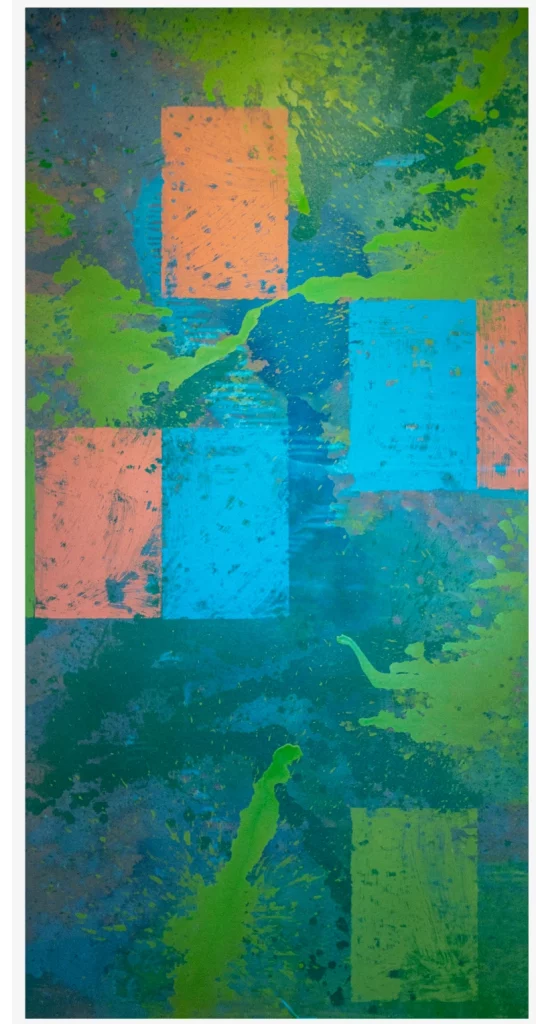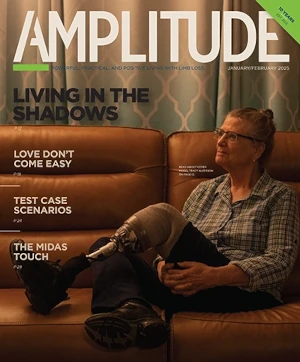When he opened his prosthetic clinic in suburban Indianapolis, Matt Habecker chose not to cover the walls with instructional posters, product literature, inspiring slogans, and other typical O&P decor. Instead, he displayed framed photographs taken by local schoolchildren through a local program called The Viewfinder Project.
“Kids find beauty in all sorts of mundane objects,” says Habecker, who practices at the Indiana Institute of Prosthetics. “Some of the pictures were at really strange angles, and you couldn’t really tell what you were looking at. One picture that drew a lot of attention was looking down into a bright red trash can. I had many conversations about that particular piece of art, and how something you would normally consider ugly could be so beautiful and vibrant.”
Those discussions, in turn, opened doors that allowed Habecker to connect with his patients on a personal level—and often helped patients reconnect with themselves.
“Instead of just talking specifically about the hardware we’re fitting, we could talk about faith, or about why bad things happen to good people,” he says. “We’d just get to be human together, in a way that might not happen if we were surrounded by pictures of prosthetic feet. When patients come in, they don’t need to be reminded that they’re an amputee. But maybe they’ve forgotten they’re still human, or they’re grieving the loss of their identity.”
When he moved to a new location last year, Habecker decided to take the art-as-healing concept one step further: He’s combining his prosthetic clinic with an actual art gallery. That vision reaches its culmination next Friday, October 14, when the new facility hosts its inaugural exhibition: a collection of paintings by Quincy Owens, one of Indiana’s best-known abstract artists.

Quincy Owens
Acrylic on canvas
While it may seem like an unusual pairing, Habecker doesn’t see any reason why art and healthcare shouldn’t coexist. On the contrary, the combination is what drew him to the profession in the first place. Once an aspiring graphic artist, Habecker switched to a pre-med track before ultimately earning a business degree. After graduation, as he was trying to settle on a career path, he saw (and admired) an amputee striding elegantly on a prosthetic leg in New York City. That, in turn, led to Habecker’s discovery of prosthetics as an outlet for both his creative impulses and his problem-solving talents.
“It’s very much an art and a science,” he explains. “And it needs to be both, because both are critical to a successful outcome for the patient. Math and science are necessary when you’re dealing with technology, but it takes a certain amount of intuition to make everything work together in a way that benefits the patient. The beauty of art is that it mixes things up and creates some contradictions, and in those contradictions something new can grow—something you’ve never discovered before. The goal is to find the right balancing point between artistry and technology to create the best outcomes.”
That’s the metanarrative of his clinic, Habecker says—to explore new possibilities, mix ideas, embrace innovation, and invent one-of-a-kind solutions. That philosophy drives his clinic’s day-to-day care as well as its research efforts, which include a next-gen (and newly patented) prosthetic foot and a specialized gait-supporting socket for above-knee amputees. If an off-the-shelf solution doesn’t exist for a given patient’s needs, Habecker takes out his sketch pad and gives his imagination free rein. “My artistic tank gets completely filled by the work that I do helping patients,” he says.
Likewise, there’s a growing body of evidence that art can help patients fill their emotional tanks. Habecker has seen it with his own eyes. “Art allows us to view things from a different totally different perspective,” he says. “When you’re adjusting to limb loss, it’s the same thing. There is a new perspective you have to adapt to. There’s always beauty to be found. You just need to find it.”
The grand opening of the Indiana Institute of Prosthetics’ new location takes place next Friday, October 14, from 6 to 9 p.m. There’s more info at the clinic’s Facebook page. View more of Quincy Owens’ images at his website.





